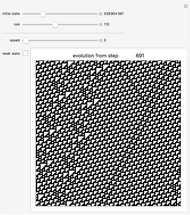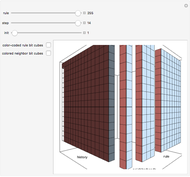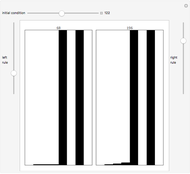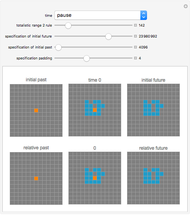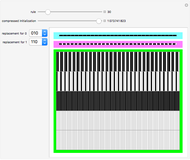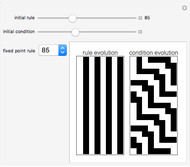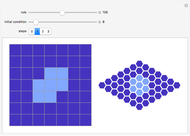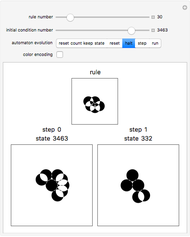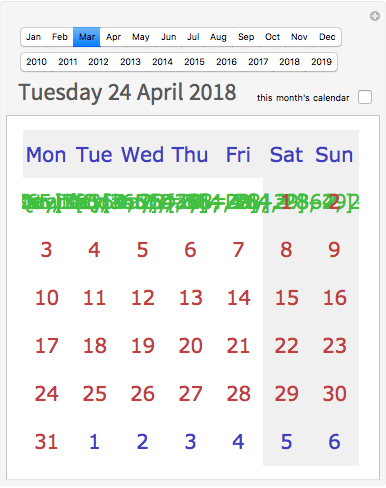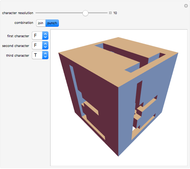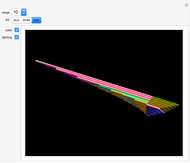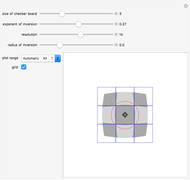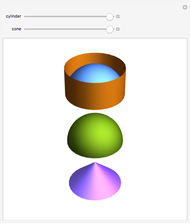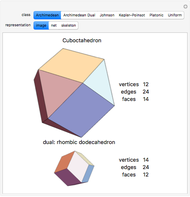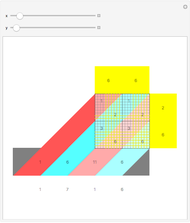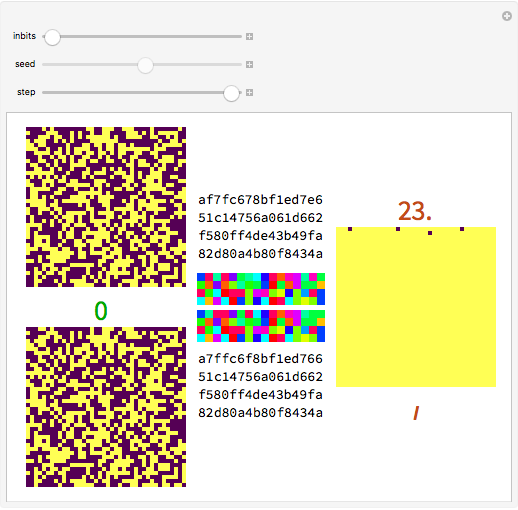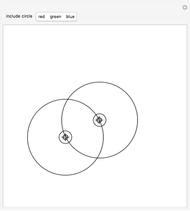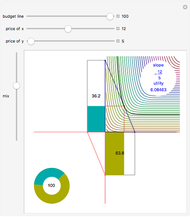Patch Reentry of Elementary Cellular Automata

Requires a Wolfram Notebook System
Interact on desktop, mobile and cloud with the free Wolfram Player or other Wolfram Language products.
Three borders of an elementary cellular automaton evolution can be used to compute a new initial condition for a modified evolution. The upper plot gives the current evolution. The middle plot illustrates the computation of the next initial condition. The lower plot gives the next patch step.
[more]
Contributed by: Michael Schreiber (March 2011)
Open content licensed under CC BY-NC-SA
Snapshots
Details
detailSectionParagraphPermanent Citation
"Patch Reentry of Elementary Cellular Automata"
http://demonstrations.wolfram.com/PatchReentryOfElementaryCellularAutomata/
Wolfram Demonstrations Project
Published: March 7 2011






